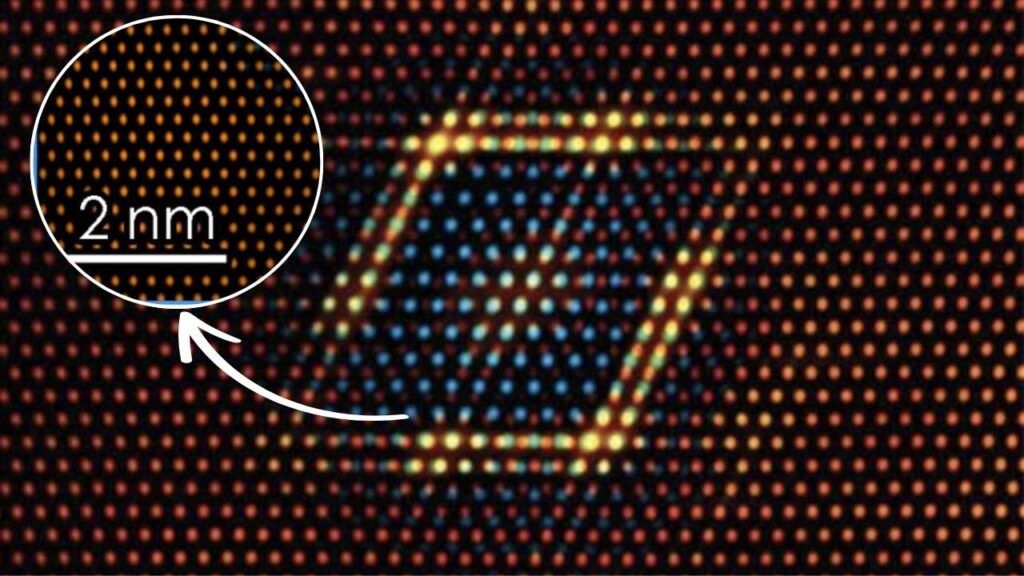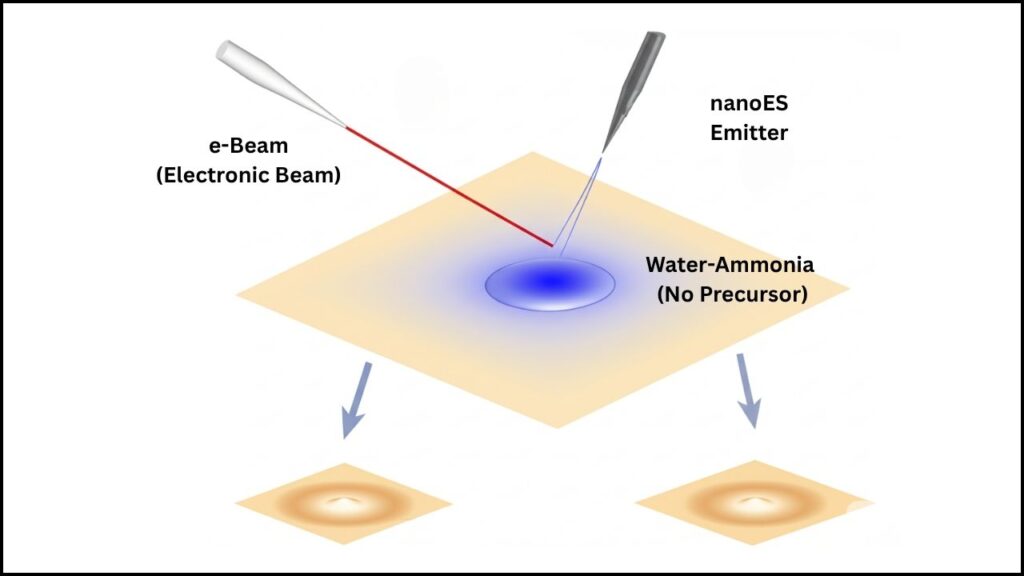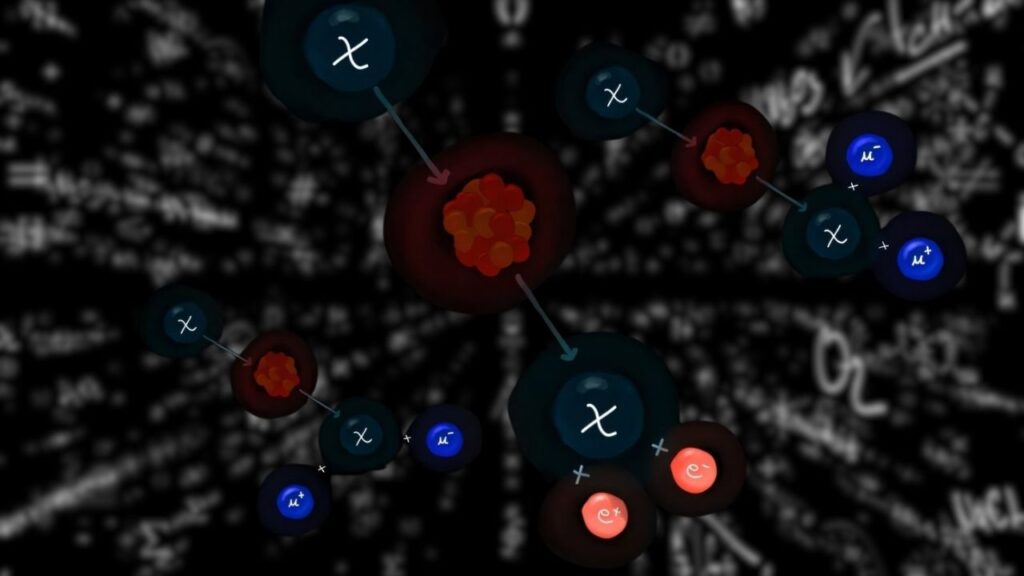The world of medicine is changing rapidly, and one of the most exciting advancements is the use of artificial intelligence (AI) to improve how we diagnose and treat diseases. At the forefront of this transformation is LG’s Exaone Path 2.0, a groundbreaking AI-powered system that is setting new standards for speed, accuracy, and accessibility in genetic testing. This article explores what makes Exaone Path 2.0 so revolutionary, how it works, and what it means for patients, doctors, and the future of healthcare.

Table of Contents
LG’s Exaone Path 2.0 Uses AI to Advance Precision in Genetic Testing
| Feature/Fact | Details & Data |
|---|---|
| AI Model Name | Exaone Path 2.0 |
| Developer | LG AI Research (LG Group) |
| Main Function | Analyzes pathology images to predict genetic mutations and gene expression |
| Speed | Delivers genetic testing results in under 1 minute (vs. 2+ weeks for traditional methods) |
| Accuracy | 78.4% gene mutation prediction accuracy |
| Training Data | Over 10,000 whole-slide images paired with DNA/RNA (multiomics) data |
| Clinical Focus | Oncology (lung and colorectal cancers), with plans for transplant, immunology, diabetes |
| Key Partners | Vanderbilt University Medical Center, Jackson Laboratory, Seoul National University |
| Official Website | LG AI Research – Exaone Path |
LG’s Exaone Path 2.0 is revolutionizing genetic testing by combining the latest advances in artificial intelligence, digital imaging, and genomics. With its ability to deliver fast, accurate, and cost-effective results, Exaone Path 2.0 is poised to become a cornerstone of precision medicine—not just for cancer, but for a wide range of diseases. As AI continues to shape the future of healthcare, systems like Exaone Path 2.0 will help ensure that patients everywhere receive the right diagnosis and the right treatment, at the right time.
Understanding Genetic Testing and Its Challenges
Before diving into Exaone Path 2.0, it’s important to understand why genetic testing is so vital in modern medicine. Genetic testing helps doctors find changes in your DNA that may cause disease. In cancer care, for example, knowing which genes are mutated in a tumor can help doctors pick the best treatment for each patient.
Traditional genetic testing involves several steps:
- Collecting a tissue sample from the patient
- Sending the sample to a specialized laboratory
- Extracting DNA or RNA from the tissue
- Sequencing the genetic material
- Analyzing the results
This process can take two weeks or more. It requires expensive equipment, skilled technicians, and often involves sending samples to distant labs. For patients waiting for a diagnosis or treatment plan, these delays can be stressful and sometimes dangerous.
What Is Exaone Path 2.0 and How Does It Work?
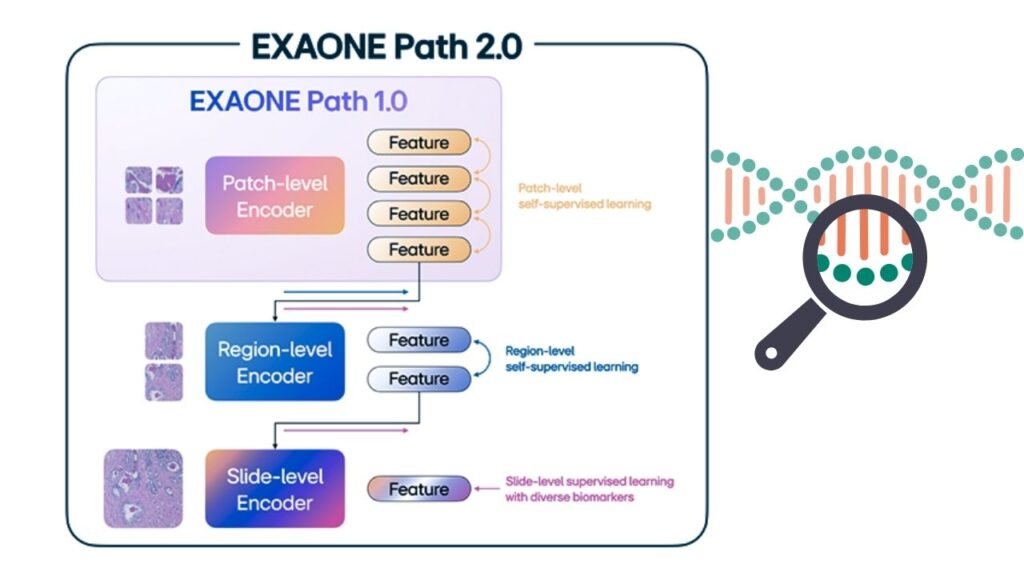
Exaone Path 2.0 is an advanced AI model created by LG AI Research. It is designed to look at digital images of tissue samples (called pathology images) and predict important genetic information—such as mutations and gene activity—without needing to physically analyze the DNA. This is possible because certain genetic changes leave visible clues in the structure and appearance of cells.
Here’s how Exaone Path 2.0 works:
1. Learning from a Massive Dataset
Exaone Path 2.0 was trained on more than 10,000 sets of data, each containing a high-resolution image of a tissue sample and the corresponding genetic data from DNA and RNA tests. This combination is known as multiomics data. By learning from these examples, the AI model can recognize patterns in the images that are linked to specific genetic changes.
2. Analyzing Images at Multiple Levels
Traditional AI models often analyze small sections of an image, which can cause them to miss the bigger picture. Exaone Path 2.0 uses a unique approach: it examines both small patches and the entire slide. This helps it understand fine details and overall tissue structure, leading to more accurate predictions.
3. Predicting Genetic Mutations and Gene Expression
Once trained, Exaone Path 2.0 can analyze new pathology images and predict:
- Which genes are mutated
- How active certain genes are
- Subtle changes in cell structure that may indicate disease
These predictions are made in less than a minute, compared to the weeks required for traditional genetic testing.
4. Delivering Actionable Results
The AI generates a report for doctors, highlighting the likely genetic mutations and gene activity. This information helps doctors make faster, more informed decisions about diagnosis and treatment.
Why Exaone Path 2.0 Is a Game-Changer
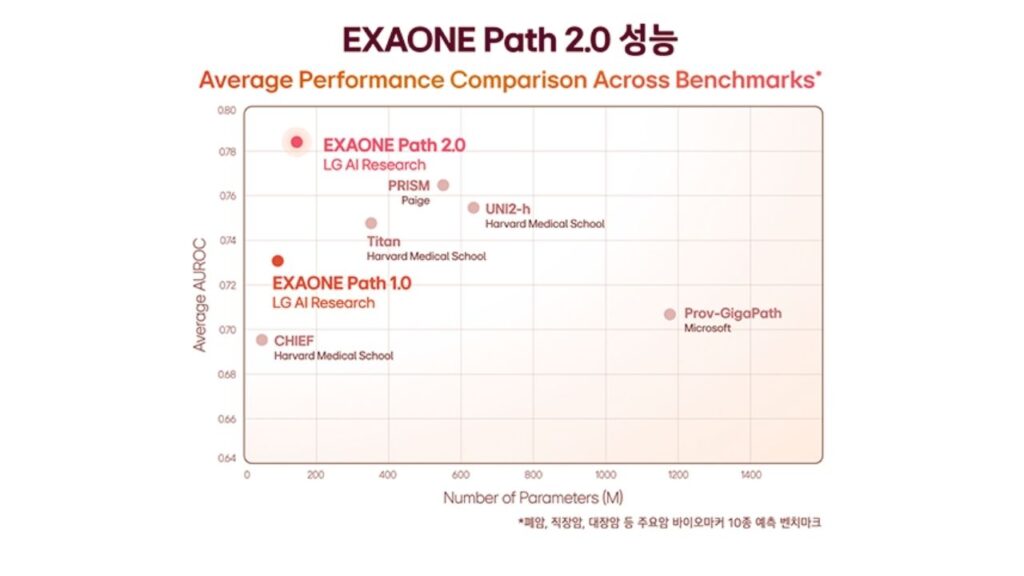
Speed
With Exaone Path 2.0, genetic testing that once took weeks can now be completed in under a minute. This is especially important for cancer patients, where quick decisions can save lives.
Accuracy
The model achieves a gene mutation prediction accuracy of 78.4%. This level of precision is among the best for AI-based pathology tools and is continually improving as the system learns from more data.
Cost-Effectiveness
By eliminating the need for expensive and time-consuming genetic sequencing in many cases, Exaone Path 2.0 can reduce costs for hospitals and patients. It also frees up laboratory resources for cases that truly need in-depth genetic analysis.
Personalized Medicine
Exaone Path 2.0 supports the move toward precision medicine, where treatments are tailored to each patient’s unique genetic makeup. For example, in lung or colorectal cancer, doctors can quickly identify patients who will benefit from targeted therapies, improving outcomes and reducing unnecessary treatments.
Real-World Applications and Global Partnerships
Cancer Care
Exaone Path 2.0 is already being used to assist in the diagnosis and treatment of lung and colorectal cancers. By providing rapid genetic insights, it helps oncologists match patients with the most effective therapies, often before traditional test results would even be available.
Expanding to Other Diseases
LG AI Research is actively working to apply Exaone Path 2.0’s technology to other areas, including:
- Transplant rejection: Predicting the likelihood of organ rejection after a transplant
- Immunology: Understanding immune system disorders at the genetic level
- Diabetes: Identifying genetic risk factors and complications
- Neurodegenerative diseases: Supporting research into Alzheimer’s and related conditions
Collaborative Research
LG has partnered with leading medical institutions worldwide to validate and expand Exaone Path 2.0’s capabilities. For example, at Vanderbilt University Medical Center, researchers are integrating Exaone Path 2.0 into clinical workflows to assess its impact on real patient care. Similar collaborations are underway with Jackson Laboratory and Seoul National University.
Step-by-Step Guide: How Exaone Path 2.0 Is Used in Clinical Practice
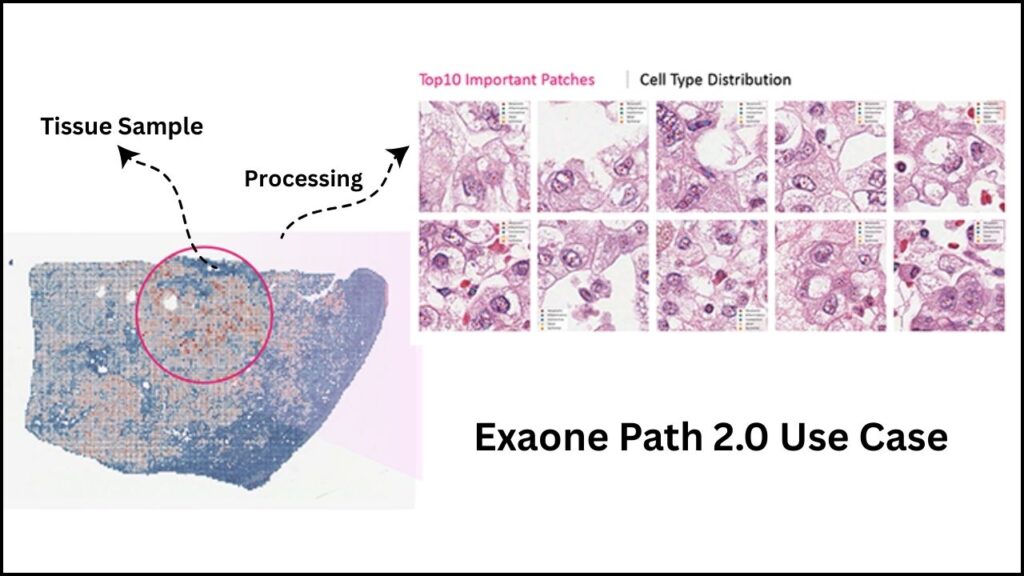
1. Tissue Sample Collection
A doctor collects a tissue sample from the patient, such as a biopsy from a tumor.
2. Digital Image Creation
The sample is processed and scanned to create a high-resolution digital image of the tissue, known as a whole-slide image.
3. AI-Powered Image Analysis
Exaone Path 2.0 analyzes the image using its advanced AI algorithms, comparing it to thousands of previously studied samples.
4. Genetic Prediction
The AI predicts which genes are mutated and how active they are, based solely on the image.
5. Rapid Reporting
Within a minute, the AI generates a report with its findings, which is sent to the doctor.
6. Informed Decision-Making
Doctors use the AI’s report to guide diagnosis and select personalized treatments for the patient.
Benefits for Patients and Healthcare Professionals
For Patients
- Faster answers: No more waiting weeks for genetic test results.
- More personalized care: Treatments chosen based on your unique genetic profile.
- Potentially lower costs: Fewer expensive lab tests and quicker treatment decisions.
For Healthcare Professionals
- Time savings: Rapid results mean faster diagnoses and treatment plans.
- Improved accuracy: AI helps spot genetic patterns that may be missed by the human eye.
- Stay at the forefront: Using cutting-edge technology enhances the quality of care and keeps practices competitive.
Google’s AlphaGenome AI Predicts Genetic Mutations With Unmatched Precision
FAQs About LG’s Exaone Path 2.0 Uses AI to Advance Precision in Genetic Testing
What is Exaone Path 2.0?
Exaone Path 2.0 is an AI-powered system developed by LG that analyzes digital images of tissue samples to predict genetic mutations and gene activity, providing results in less than a minute.
How accurate is Exaone Path 2.0?
It has a gene mutation prediction accuracy of 78.4%, which is among the highest for AI models in digital pathology.
Does Exaone Path 2.0 replace traditional genetic testing?
While Exaone Path 2.0 can often provide the information needed for diagnosis and treatment, some situations may still require traditional DNA sequencing for confirmation or deeper analysis.
Is it only for cancer?
Currently, Exaone Path 2.0 is focused on oncology, particularly lung and colorectal cancers, but research is underway to apply it to other diseases such as transplant rejection, immunology, diabetes, and neurodegenerative disorders.
Is Exaone Path 2.0 available everywhere?
LG is working with leading hospitals and research centers in several countries to bring Exaone Path 2.0 into clinical practice. Its availability is expanding as more institutions validate and adopt the technology.
The Future of AI in Medicine: What’s Next?
The introduction of AI systems like Exaone Path 2.0 marks a turning point in how we approach disease diagnosis and treatment. As these technologies continue to evolve, we can expect even greater accuracy, faster results, and broader applications across many fields of medicine.
For professionals, staying updated on AI advancements will be essential for delivering the best care. For patients, these innovations promise quicker answers, more effective treatments, and a more personalized healthcare experience.
